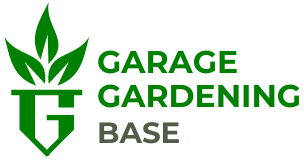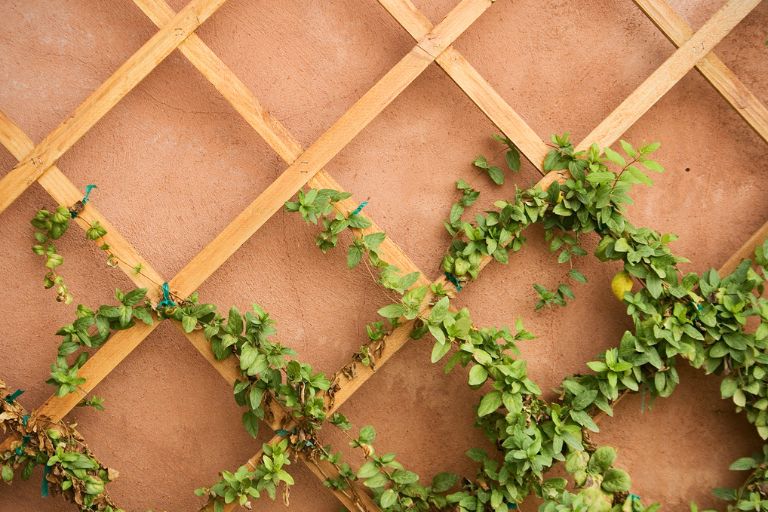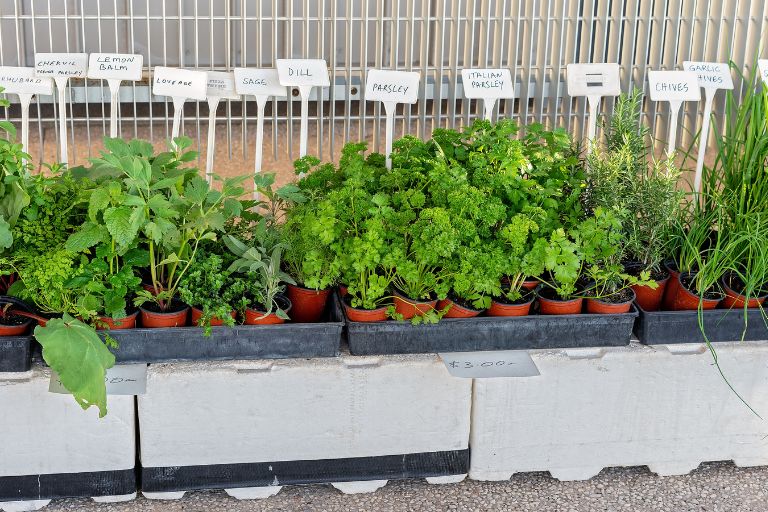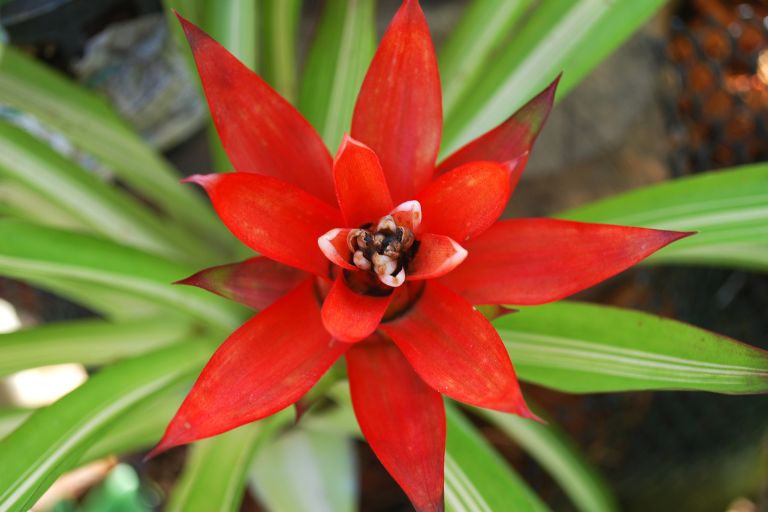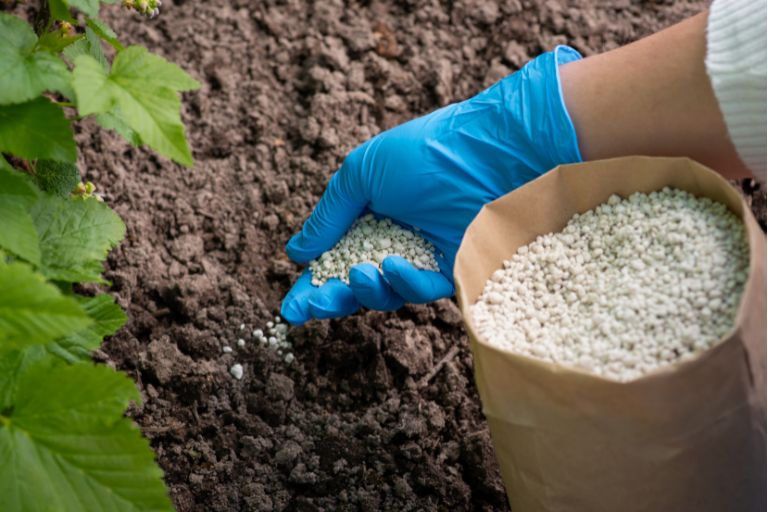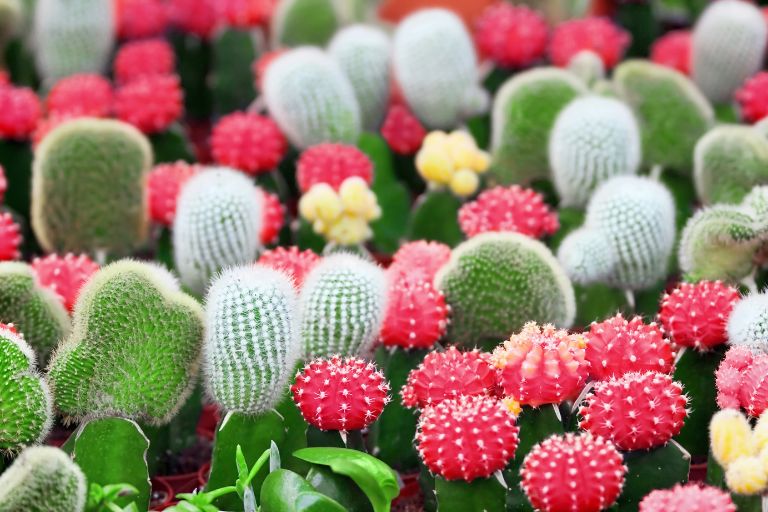Transforming Your Garage into a Thriving Aquaponic Garden: A Comprehensive Guide
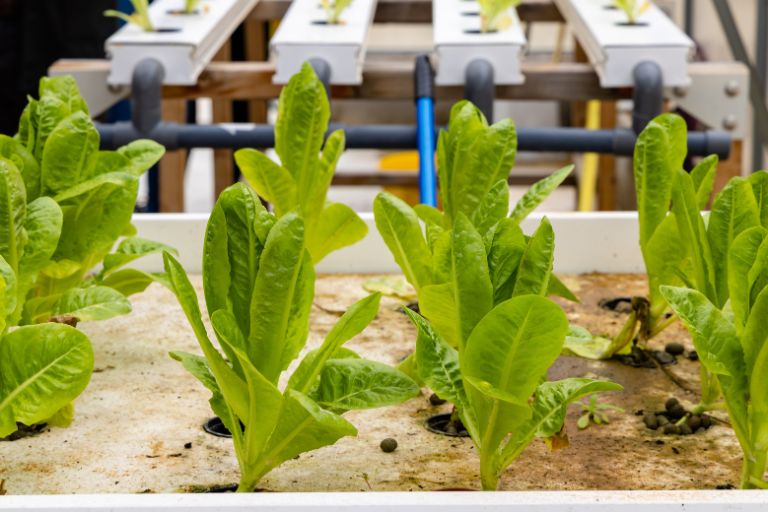
Imagine a garden where fish and plants work together in perfect harmony, creating a thriving ecosystem right in your own home. Welcome to the world of aquaponic gardening – a sustainable, efficient and downright ingenious way of growing food that’s growing in popularity faster than you can say “homegrown”.
So what exactly is aquaponic gardening? It’s a revolutionary approach that combines aquaculture (fish farming) with hydroponics (growing plants in water). The magic happens in a closed-loop system where the fish waste provides nutrients for the plants, and in return the plants filter and clean the water for the fish. It’s like nature’s own little recycling programme, all within the confines of your garage.
Now let’s talk about the benefits. First and foremost, aquaponic gardening is incredibly sustainable. By harnessing the power of natural processes, it uses up to 90% less water than traditional soil-based gardening, making it a champion of conservation. And because everything is contained within the system, there’s minimal run-off and waste, making it a model of efficiency.
But here’s the really exciting part – aquaponic gardening is perfect for urban environments such as garages. With limited space and resources, city dwellers are turning to innovative solutions like aquaponics to grow their own food right at home. There’s no need for a backyard or sprawling garden – all you need is a little space in your garage and a whole lot of enthusiasm.
And the best part? Aquaponic gardening isn’t just for experienced green thumbs – it’s accessible to anyone with a passion for sustainability and a willingness to learn. Whether you’re an experienced gardener looking to try something new, or a complete novice eager to dip your toes into the world of home-grown goodness, aquaponics welcomes all with open arms.
As the popularity of aquaponic gardening continues to grow, more and more people are discovering the joy of growing their own food in a way that’s not only good for the planet, but also incredibly rewarding. It’s a movement that’s taking root in urban jungles around the world, one garage garden at a time.
Overview of Aquaponics
At its heart, aquaponics is about creating a beautifully balanced ecosystem where fish and plants work together to thrive. Here’s how it works:
First, you have your fish. They’re not just there for show – they’re an integral part of the system. As they swim around, they naturally produce waste, releasing ammonia into the water.
Here’s where things get really interesting. Beneficial bacteria swoop in to save the day. These little microbial superheroes take the ammonia and turn it into nitrites and then nitrates – a form of nitrogen that plants love.
Enter the plants. They’re not just sitting pretty – they’re hard at work, soaking up those nitrates through their roots and using them to grow big and strong. In the process, they also filter the water, removing any impurities and keeping the environment squeaky clean for the fish.
And the cycle continues. As the plants grow, they provide shade and shelter for the fish, creating a cosy little habitat for them to thrive in. And as the fish continue to produce waste, the bacteria and plants continue to do their thing, creating a beautifully balanced, self-sustaining ecosystem.
It’s like having a little bit of nature in your garage – a closed-loop system where every element plays a vital role in keeping things running smoothly. No need for chemical fertilisers or pesticides – just a healthy dose of teamwork and an appreciation for the wonders of nature.
So whether you’re a seasoned aquaponics enthusiast or a curious newcomer looking to dip your toes into the world of sustainable gardening, one thing’s for sure – the magic of aquaponics is something very special.
Setting Up Your Garage for Aquaponics
Turn your garage into an aquaponic oasis? It’s not just a pipe dream – it’s totally feasible! Let’s break down what you need to consider to make it happen.
First, let’s talk about space. Garages come in all shapes and sizes, so take a good look around and work out how much space you have to work with. You’ll need enough space for your aquariums, grow beds and any other equipment you’ll be using. If space is tight, don’t worry – you can get creative with vertical gardening or compact setups to make the most of what you have.
Now let’s look at the light. Natural light is ideal for plant growth, but most garages don’t get much sun. Not to worry – you can easily supplement this with artificial lighting to keep your plants happy and healthy. LED grow lights are a popular choice for indoor gardening as they provide the right spectrum of light for optimum growth without generating too much heat.
Next, let’s talk about temperature control. Depending on where you live, your garage can get quite warm in the summer or downright chilly in the winter. Stability is key when it comes to temperature, so consider insulating your garage to help regulate heat and cold. You can also use heaters or fans to maintain a comfortable environment for your fish and plants all year round.
Ah, ventilation – the unsung hero of indoor gardening. Good airflow is essential to prevent mould, mildew and other nasties from taking hold. Crack open a window, install some vents or use fans to keep the air circulating and let your garage garden breathe easy.
Now let’s talk about optimisation. Below are a few tips to help you get the most out of your garage aquaponic setup:
Choose the right plants and fish for your space and climate. Leafy greens such as lettuce and herbs are a good choice for beginners, while cold-water fish such as trout or tilapia are well suited to cooler environments.
Keep an eye on water quality. Regular testing and monitoring will help ensure that your fish and plants are thriving in the best possible conditions.
Don’t forget maintenance! Regular cleaning, pruning and troubleshooting will keep your system running smoothly and your garden thriving.
Get creative with your design. Vertical gardening, floating raft beds and stacked systems are all great ways to maximise space and productivity in your garage.
Finally, have fun! Experiment, learn and enjoy the journey of growing your own food right in your own home.
Equipment and Supplies
Below is a list of essential equipment and supplies you will need for your setup.
Fish tanks – These are the homes of your aquatic friends, so choose wisely. You’ll want tanks large enough to accommodate your fish comfortably. Consider options such as traditional aquariums, stock tanks or even repurposed containers. Make sure they’re sturdy, watertight and able to withstand the weight of water and fish.
Grow beds – This is where your plants will work their magic. There are several types to choose from, including media-filled beds, Nutrient Film Technique (NFT) systems and Deep Water Culture (DWC) systems. Decide based on your space and preferences. You can use containers, trays or even build your own raised beds from materials such as wood or plastic.
Pumps – These are the heart of your aquaponic system, circulating water between the fish tanks and growing beds. Look for submersible pumps that are reliable, energy efficient and able to handle the flow rate required for your setup. Consider factors such as head (the vertical distance the pump needs to lift water) and flow rate when choosing the right pump for your system.
Filters – Keeping your water clean is critical to the health of your fish and plants. Mechanical filters remove solid debris, while biological filters help break down ammonia and nitrites. You can use a combination of filters such as sponge filters, canister filters or even DIY options such as filter media or lava rock.
Lighting systems – Since most garages don’t get much natural light, you’ll probably need to supplement with artificial lighting. LED grow lights are a popular choice for indoor gardening as they provide the right spectrum of light for optimum plant growth without generating too much heat. Look for lights designed specifically for plants, with adjustable intensity and timers for easy adjustment.
Now let’s talk about sourcing equipment and cost considerations:
Local stores – Pet shops, garden centres and DIY stores are great places to start. You can find a wide range of aquarium equipment, gardening supplies and DIY materials to get you started. Keep an eye out for sales and promotions to save some money.
Online retailers – Websites such as Amazon, eBay and aquaponic specialty stores offer a wide selection of equipment and supplies, often at competitive prices. You can also read reviews and compare options from the comfort of your own home.
DIY options – Don’t be afraid to get creative and build some of your own equipment. From homemade grow beds to DIY filters and lighting systems, there are plenty of tutorials and resources available online to help you save money and customise your setup to suit your needs.
When it comes to cost considerations, it really depends on the size and complexity of your aquaponic system. A small-scale setup for beginners can be relatively inexpensive, with costs mainly associated with tanks, pumps and basic supplies. As you scale up and add more features such as larger tanks, advanced filtration systems and additional growing beds, costs can increase accordingly.
Remember, investing in quality equipment up front can save you time, money and headaches down the line. But don’t feel like you have to break the bank – start small, learn as you go and upgrade as you go.
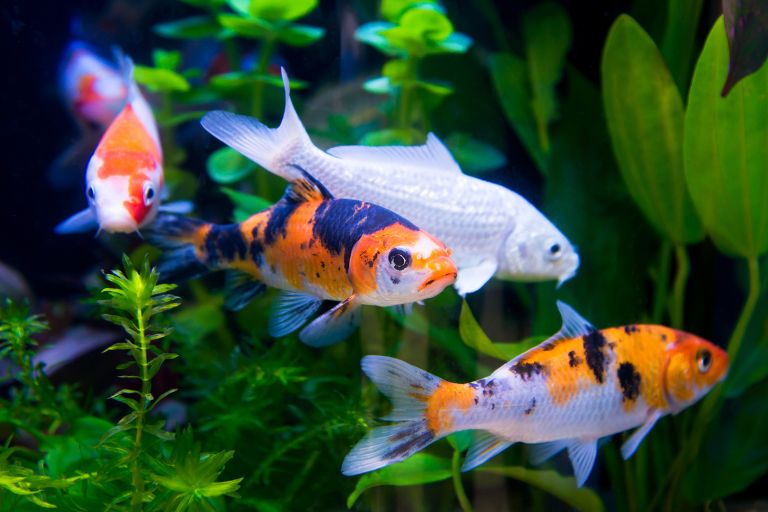
Choosing Fish and Plants
Choosing the right fish and plants is crucial to the success of your garage aquaponic system. Let’s take a look at some guidelines for choosing the right species:
Fish Species
Tilapia – Tilapia are one of the most popular choices for aquaponics due to their hardiness, fast growth rate and ability to tolerate a wide range of water conditions. They thrive in warm water temperatures (around 75-85°F) and are relatively low-maintenance, making them ideal for beginners.
Trout – If you live in a cooler climate, trout may be a better choice. They prefer cooler water temperatures (around 50-60°F) and are well suited to a garage set-up with adequate temperature control. Remember that trout can be more sensitive to water quality, so regular monitoring is essential.
Goldfish or Koi – These ornamental fish are a popular choice for aquaponics, especially for smaller setups or for decorative purposes. They’re hardy, adaptable and can tolerate a wide range of water conditions. Just be aware of their space requirements and potential growth size.
Aquatic Plants
Leafy greens – Lettuce, spinach, kale and chard are excellent choices for aquaponic systems. They thrive in nutrient-rich water and don’t require much space to grow. What’s more, they grow quickly and can provide a steady harvest for your kitchen.
Herbs – Basil, mint, coriander and parsley are perfect for adding flavour to your meals and fragrance to your garage garden. They prefer warmer temperatures and plenty of sunlight, so make sure your lighting system can accommodate their needs.
Fruit plants – If you have space and adequate lighting, consider adding fruiting plants such as tomatoes, peppers, strawberries or cucumbers to your aquaponic system. Just remember that they may require more nutrients and support as they grow, so plan accordingly.
When selecting fish and plants for your aquaponic system, consider the following factors:
Water temperature – Choose fish and plants that can thrive in the temperature range of your garage environment. If you live in a colder climate, choose cold-water fish and plants that can tolerate cooler temperatures.
pH levels – Most fish and plants prefer a pH between 6.5 and 7.5. Test your water regularly and adjust the pH if necessary to ensure optimum conditions for both fish and plants.
Space requirements – Consider the size of your tanks and growing areas when selecting fish and plants. Choose species that won’t outgrow your setup or compete for space with other inhabitants.
Nutrient requirements – Different plants have different nutrient requirements, so choose species that are compatible with the nutrient levels provided by your fish waste. Leafy plants are generally a good choice for beginners as they have relatively low nutrient requirements.
Maintenance and Care
Maintaining your aquaponic system is key to keeping it healthy and thriving. Here’s a step-by-step guide to help you stay on top of things:
Monitor water quality – Regularly test water parameters such as pH, ammonia, nitrites and nitrates to ensure they’re within acceptable ranges for your fish and plants. You can use test kits or digital meters to measure these parameters. Aim for a pH of around 6.5-7.5, ammonia and nitrite levels below 0.5 ppm and nitrate levels below 100 ppm.
Feed your fish – Depending on the species and size of your fish, feed them a balanced diet of high quality fish pellets or flakes. Be careful not to overfeed as excess food can lead to water quality problems. Feed your fish small amounts 2-3 times a day and adjust according to their appetite and growth.
Prune plants – Keep an eye on your plants and trim any dead or yellowing leaves to encourage healthy growth. Pruning also helps to improve airflow and prevent overcrowding, reducing the risk of disease and pest infestation. Harvest mature plants regularly to encourage new growth and prevent competition for nutrients.
Check system components – Inspect your pumps, filters and other system components regularly for signs of damage or wear. Clean or replace filters as necessary to maintain water clarity and circulation. Ensure that pumps are working properly and that there is adequate water flow throughout the system.
Maintain water temperature – Monitor the temperature in your aquaponic system and make adjustments as needed to keep it within the optimal range for your fish and plants. Use heaters or fans to regulate temperature fluctuations and maintain a stable environment, especially during extreme weather conditions.
Manage pests – Keep an eye out for common pests such as aphids, whiteflies and spider mites that can damage your plants. Use organic pest control methods such as insecticidal soap, neem oil or introducing beneficial insects such as ladybirds to keep pest populations under control. Remove any infested leaves or plants to prevent pests from spreading.
Perform regular water changes – Although aquaponic systems are designed to be self-sustaining, occasional water changes may be necessary to maintain water quality and prevent nutrient build-up. Replace 10-20% of the water in your system every 1-2 weeks, making sure to dechlorinate tap water before adding it to the system.
Stay consistent – Consistency is the key to maintaining your aquaponic system. Establish a routine for testing water parameters, feeding fish and performing maintenance tasks, and stick to it. Regular monitoring and maintenance will help prevent problems before they occur and keep your system running smoothly.
Remember, the key to a successful aquaponic system is regular maintenance and attention to detail.
Maximizing Yield and Efficiency
Maximising the yield and efficiency of your garage-based aquaponic garden is all about working smarter, not harder. Here are some strategies to help you get the most out of your system while minimising your use of resources:
Crop rotation – As with traditional gardening, rotating crops can help prevent nutrient depletion and soil-borne diseases. In aquaponics, you can rotate plant species in your grow beds to optimise nutrient uptake and maintain a balanced ecosystem. For example, alternate leafy greens, fruiting plants and herbs to ensure a varied and healthy harvest.
Companion planting – Certain plant combinations can benefit each other by repelling pests, attracting beneficial insects or improving nutrient uptake. Consider companion planting in your aquaponic system to improve plant health and productivity. For example, planting basil next to tomatoes can help repel pests and improve flavour, while marigolds can repel nematodes and attract pollinators.
Nutrient management – Regularly monitor nutrient levels in your system and adjust as needed to maintain optimal conditions for plant growth. You can supplement with organic fertiliser or nutrient solutions if levels are low, or dilute the water if levels are too high. Aim for a balanced nutrient ratio to promote healthy plant growth and prevent nutrient deficiencies.
Optimise plant growth – Provide plants with adequate light, water and nutrients to optimise growth and productivity. Ensure your lighting system provides the right spectrum and intensity for plant growth, and adjust as needed to meet plant needs and seasonal changes. Prune plants regularly to promote airflow and prevent overcrowding, which can lead to disease and pest problems.
Fish Health – Keep your fish healthy and happy by providing a balanced diet, clean water and a stress-free environment. Avoid overfeeding, as excess food can lead to water quality and health problems for your fish. Monitor water parameters regularly and make adjustments as necessary to maintain optimal conditions for fish health and growth.
Minimise resource use – Practice water conservation by recycling and reusing water whenever possible. Use rainwater collection systems or grey water recycling to supplement your water supply and reduce reliance on freshwater sources. In addition, consider using energy efficient equipment and renewable energy sources to minimise energy consumption and reduce your carbon footprint.
Continuous learning and improvement – Stay abreast of the latest aquaponic techniques and best practices to continually improve the efficiency and productivity of your system. Experiment with new plant varieties, growing methods and sustainable practices to optimise your garage-based aquaponic garden over time.
By implementing these strategies, you can maximise the yield and efficiency of your garage-based aquaponic garden, while minimising the resources used and the environmental impact.
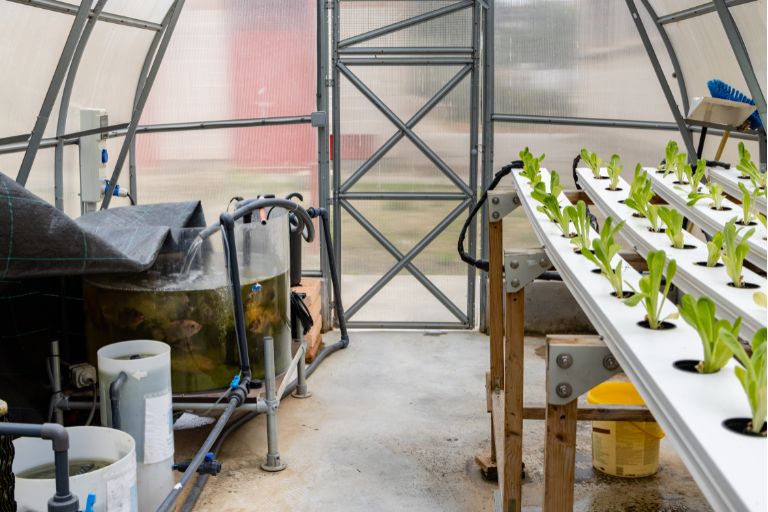
Troubleshooting Common Issues
Let’s look at some of the most common problems that can occur with garage aquaponics systems and provide troubleshooting tips and solutions to maintain system stability:
Nutrient deficiencies:
Symptoms – Yellowing or stunted growth of plants, especially new growth.
Solution – Test water parameters to determine which nutrients are lacking. Adjust pH levels if necessary. Supplement with appropriate organic fertiliser or nutrient solution to correct deficiencies. Consider adding compost tea or worm castings to naturally boost nutrient levels.
Algae growth:
Symptoms – Green slime or algae build-up on surfaces such as grow beds, tanks or pipework.
Solution – Increase shading to reduce light exposure that encourages algae growth. Introduce algae-eating organisms such as snails or algae-eating fish such as plecos to control algae growth. Clean and scrub surfaces regularly to remove existing algae growth. If necessary, use natural algae inhibitors such as barley straw or commercial algae control products.
Fish diseases:
Symptoms – Abnormal behaviour, loss of appetite, visible signs of disease such as lesions or discolouration.
Solution – Quarantine infected fish to prevent the spread of disease to other fish. Determine the cause of the disease by testing water quality parameters and observing fish behaviour. Treat with appropriate medication or natural remedies, following dosage instructions carefully. Ensure proper filtration and water quality management to prevent disease outbreaks. Consult a veterinarian or experienced aquaponics specialist for advice on fish health issues.
pH fluctuations:
Symptoms – pH levels outside the optimum range for fish and plant growth.
Solution – Test pH levels regularly and adjust as necessary using pH buffers or acid/alkaline solutions. Avoid sudden changes in pH by making gradual adjustments over time. Monitor alkalinity and carbonate hardness (KH) levels as they can help buffer pH fluctuations. Consider adding limestone or crushed coral to the system to naturally stabilise pH levels.
Clogged or malfunctioning equipment:
Symptoms – Reduced water flow, leaks, strange noises or equipment failure.
Solution – Regularly inspect and clean equipment such as pumps, filters and pipework to prevent blockages and malfunctions. Replace worn or damaged parts as necessary. Ensure that equipment is properly sized and installed to meet the demands of your aquaponic system. Keep spare parts on hand for quick repairs if necessary.
Temperature fluctuations:
Symptoms – Fish stress, reduced plant growth or water quality fluctuations.
Solution – Maintain a stable temperature within the optimum range for fish and plants. Insulate tanks and pipework to minimise temperature fluctuations. Use heaters or fans to regulate temperature as needed, especially during extreme weather conditions. Monitor the temperature regularly and make adjustments as needed to ensure a stable environment for your aquaponic system.
You can maintain the stability and optimise the performance of your garage aquaponic system for healthy fish and lush plant growth by addressing these common problems promptly and implementing effective troubleshooting solutions. Regular monitoring, preventive maintenance and proactive troubleshooting are essential for long-term aquaponic success.
Garage aquaponic gardening offers a number of benefits that underline its viability as both a sustainable practice and a rewarding endeavour. By harnessing the symbiotic relationship between fish and plants, aquaponics offers a closed-loop system that conserves water, reduces environmental impact and provides a constant supply of fresh, home-grown produce. This method of gardening is particularly suited to urban environments such as garages, where space may be limited, as it maximises the growing area while minimising the footprint. In addition, garage aquaponics offers year-round growing, allowing enthusiasts to enjoy a continuous harvest of nutritious fruits, vegetables and herbs regardless of outdoor weather conditions. Beyond the practical benefits, garage aquaponics is also an educational opportunity, fostering a deeper understanding of biology, ecology and sustainable agriculture among hobbyists, families and educators.
There are, however, certain considerations that need to be taken into account when starting an aquaponic garden in your garage. While an initial investment in equipment and supplies is necessary, the long-term savings in water usage and produce costs can offset this expense over time. Maintenance requirements, including regular monitoring of water quality, fish feeding, plant pruning and troubleshooting, require time and attention to ensure the health and stability of the system. There is also a learning curve, especially for beginners, who need to familiarise themselves with the principles of aquaponics and understand the specific needs of fish and plants. Consideration of factors such as available space, lighting, temperature control and ventilation are crucial to creating a suitable environment for successful garage aquaponics. Despite these considerations, the benefits of garage aquaponics far outweigh the challenges, providing a sustainable and fulfilling hobby or small-scale food production method for individuals and communities alike.
